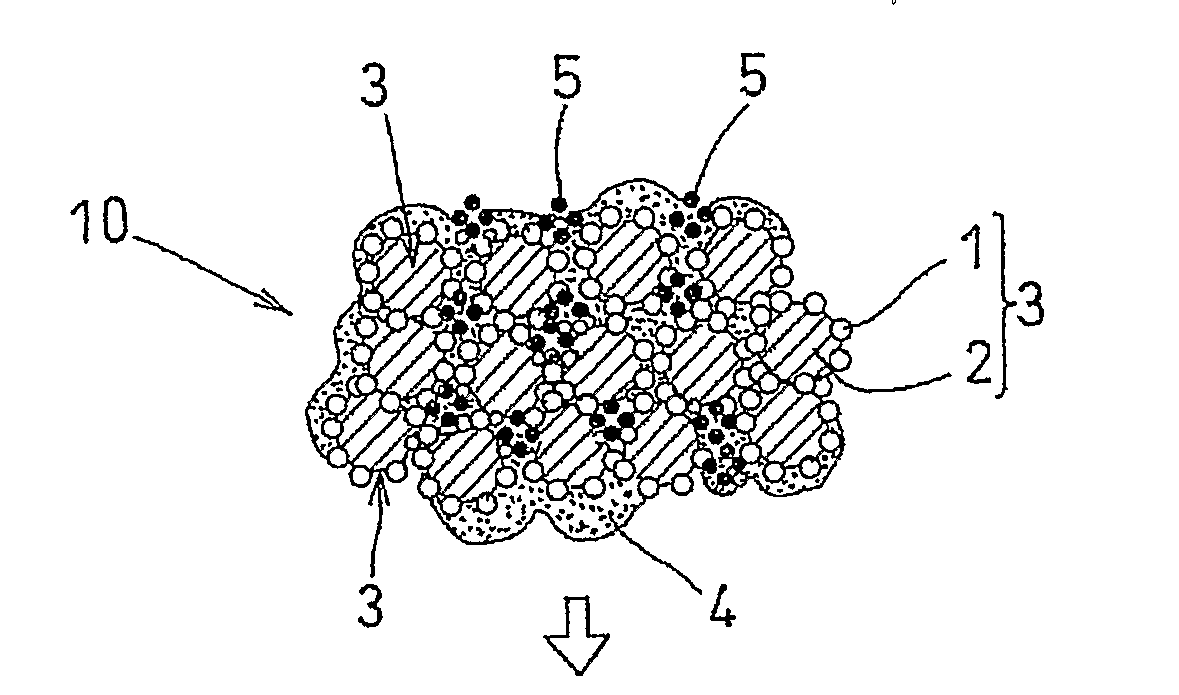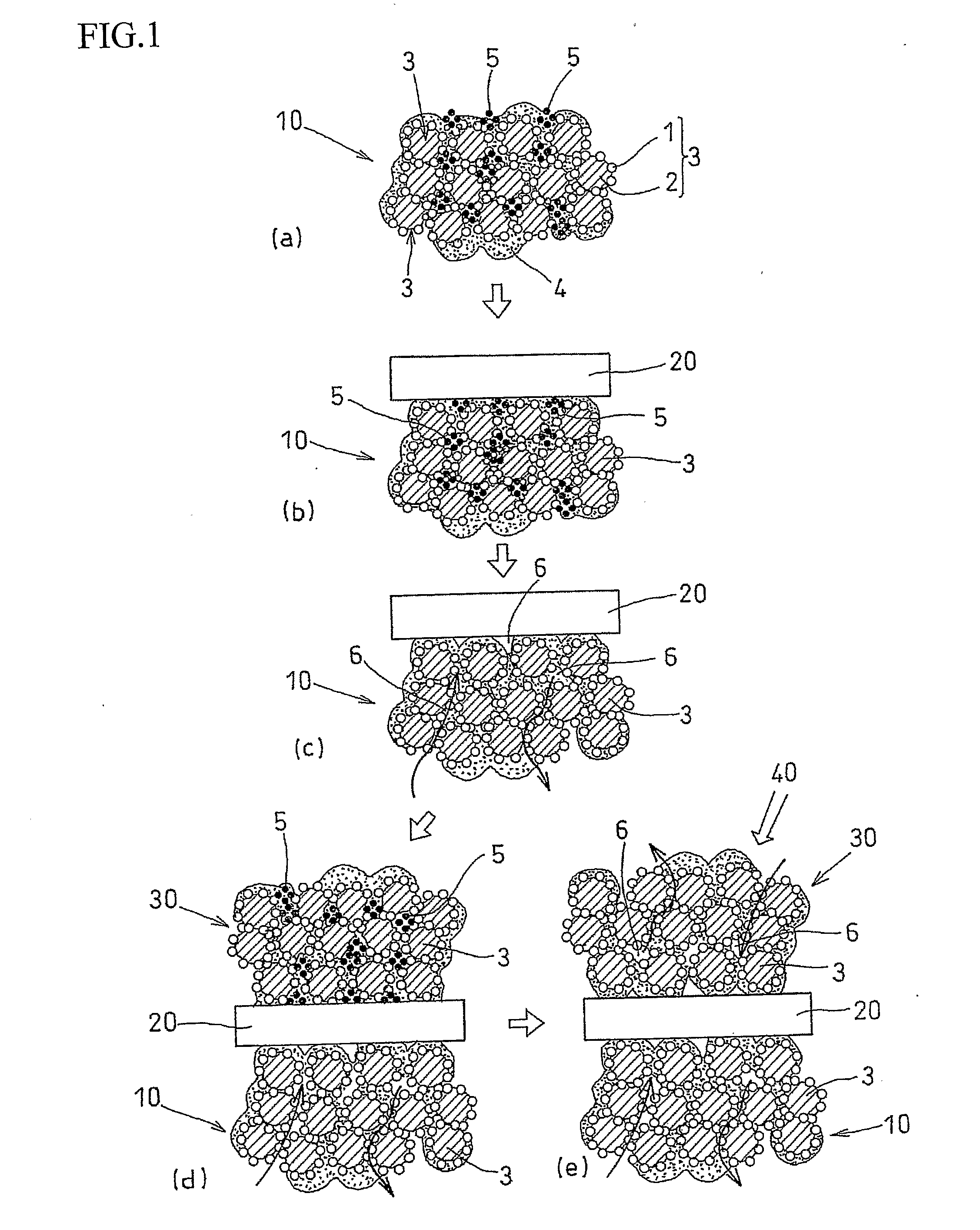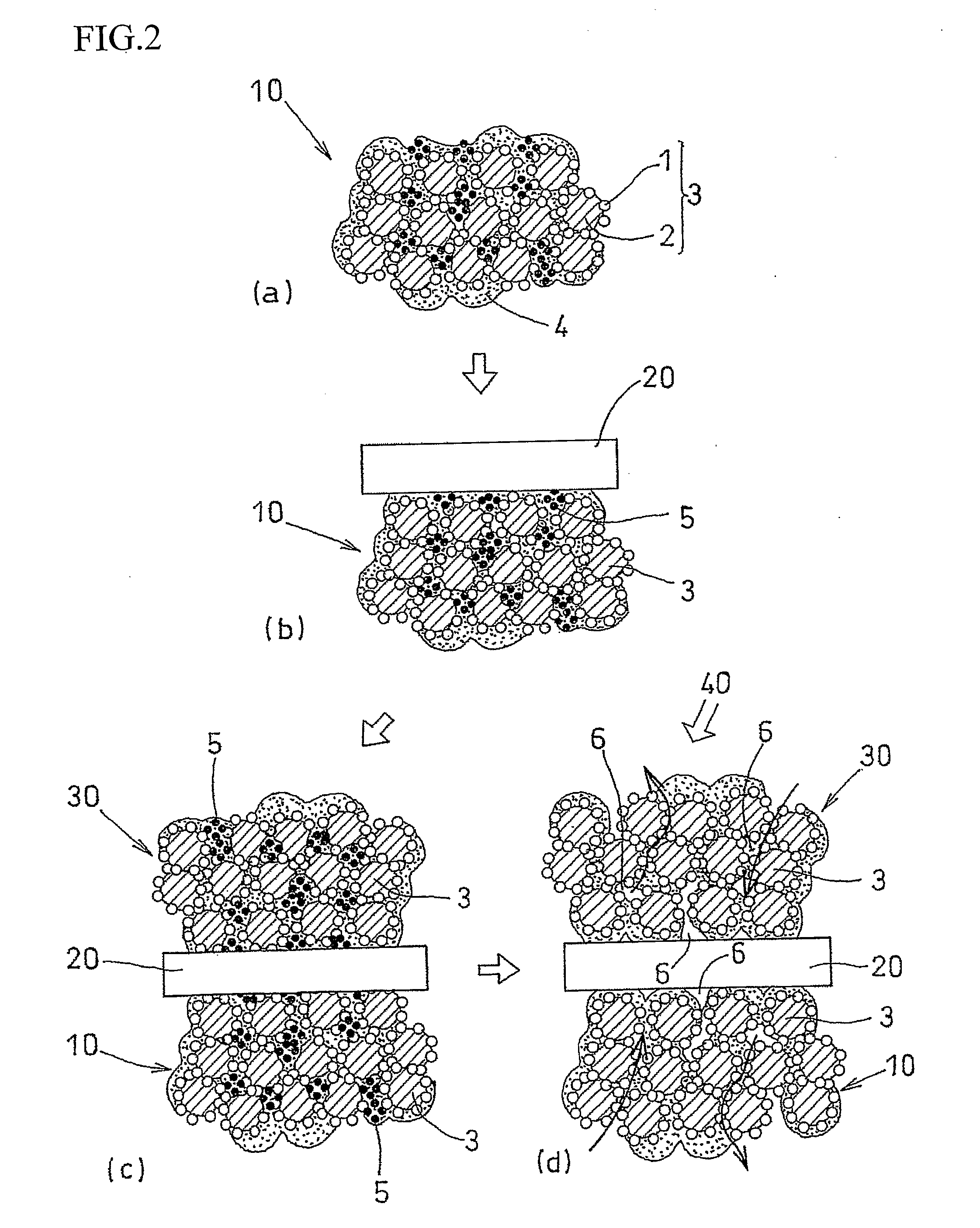Method of manufacturing a membrane-electrolyte assembly for fuel cells, and membrane-electrolyte assembly
- Summary
- Abstract
- Description
- Claims
- Application Information
AI Technical Summary
Benefits of technology
Problems solved by technology
Method used
Image
Examples
example 1
[0044]An air-electrode catalyst layer ink (first catalyst layer ink), a fuel-electrode catalyst layer ink (second catalyst layer ink), and an electrolyte layer ink were used. The air-electrode catalyst layer ink (first catalyst layer ink) and the fuel-electrode catalyst, layer ink (second catalyst layer ink) were prepared in four kinds each, having different amounts of the pore-forming agent added therein. Specifically, an ultra fine particle of ammonium carbonate having a particle diameter of 10 nm was added as the pore-forming agent in amounts of 40 wt %, 30 wt %, 20 wt %, and 10 wt % with respect to the weight of the solid components of the catalyst layer ink (carbon, platinum, and electrolyte). Ammonium carbonate starts to sublimate at temperature of 60° C. or higher, and completely sublimates at 130° C.
[0045]Each of the first catalyst layer inks was applied to the substrate sheet and subjected to drying treatment at temperature of 60° C. or lower. After drying treatment, the el...
example 2
[0047]Membrane-electrolyte assemblies were fabricated in the same way as Example 1 with the exception that the pore-forming agent consisted of an ultra fine particle of lithium carbonate having a particle diameter of 10 nm was used, instead of ammonium carbonate. FIG. 7 shows the relationship between their pore capacities and their ratios of lithium carbonate added. Also, with the four types of membrane-electrolyte assemblies, fuel cell modules were prepared, and their generation efficiency was tested in terms of the relationship between voltage and current density. The result is shown in FIG. 8.
example 3
[0050]A membrane-electrolyte assembly was fabricated in the same way as Example 1 with the exception that the air-electrode catalyst layer ink (first catalyst layer ink) and the fuel-electrode catalyst layer ink (second catalyst layer ink) were prepared each in three types, having different amounts of pore-forming agent added, namely: 0 wt %; 20 wt %; and 40 wt %. The catalyst layer ink with the ratio of pore-forming agent added 0 wt % was used in an outer-most layer. The catalyst layer ink with the ratio of pore-forming agent added 20 wt % was used in an intermediate layer. The catalyst layer ink with the amount of pore-forming agent added 40 wt % was used in a layer adjacent to the electrolyte layer.
[0051]With the thus fabricated membrane-electrolyte assembly, a fuel cell module was prepared, and its generation efficiency was tested in terms of the relationship between voltage and current density in the same way as in Example 1. The result is shown in FIG. 9 with reference to “Wit...
PUM
 Login to View More
Login to View More Abstract
Description
Claims
Application Information
 Login to View More
Login to View More - R&D
- Intellectual Property
- Life Sciences
- Materials
- Tech Scout
- Unparalleled Data Quality
- Higher Quality Content
- 60% Fewer Hallucinations
Browse by: Latest US Patents, China's latest patents, Technical Efficacy Thesaurus, Application Domain, Technology Topic, Popular Technical Reports.
© 2025 PatSnap. All rights reserved.Legal|Privacy policy|Modern Slavery Act Transparency Statement|Sitemap|About US| Contact US: help@patsnap.com



